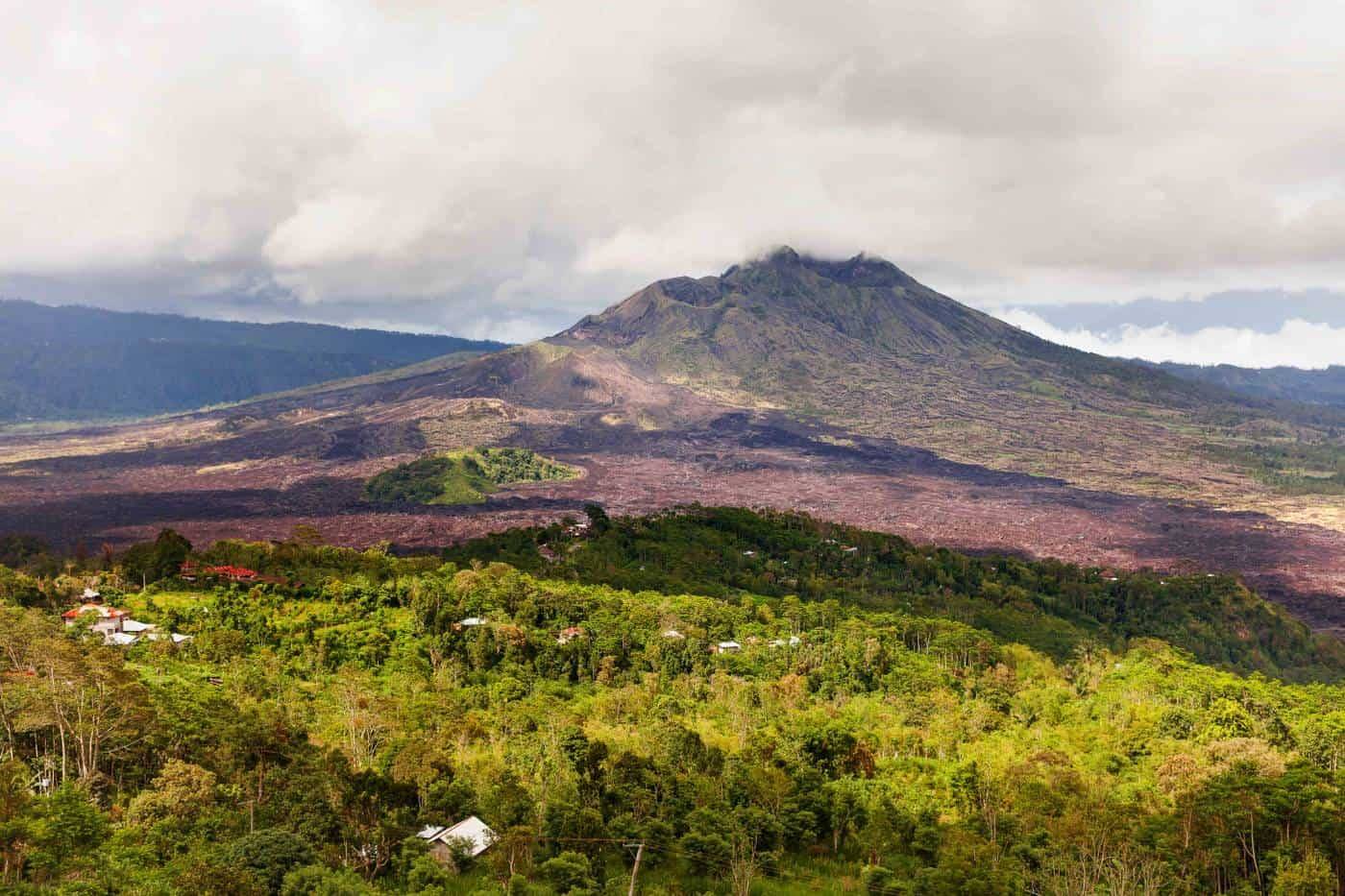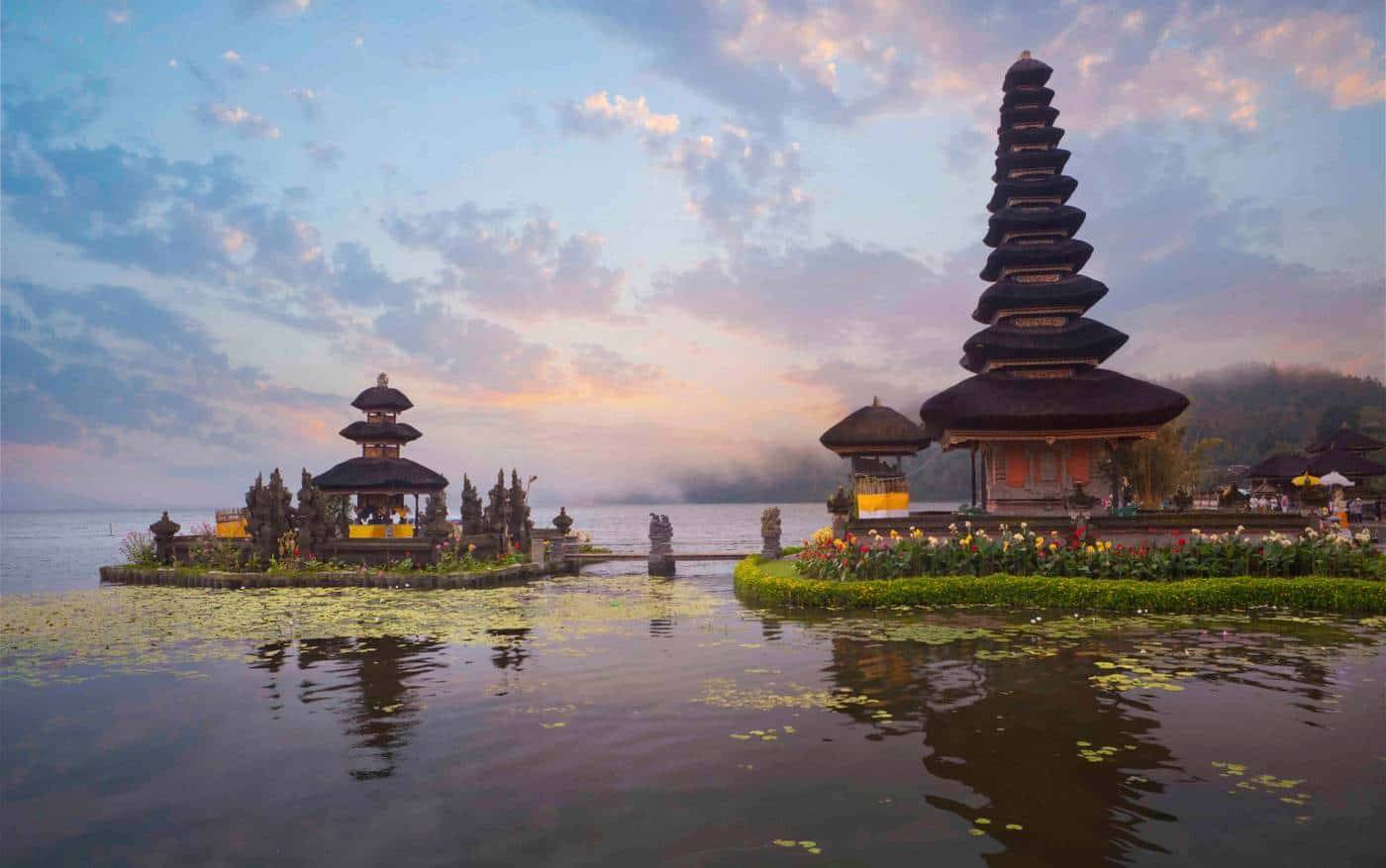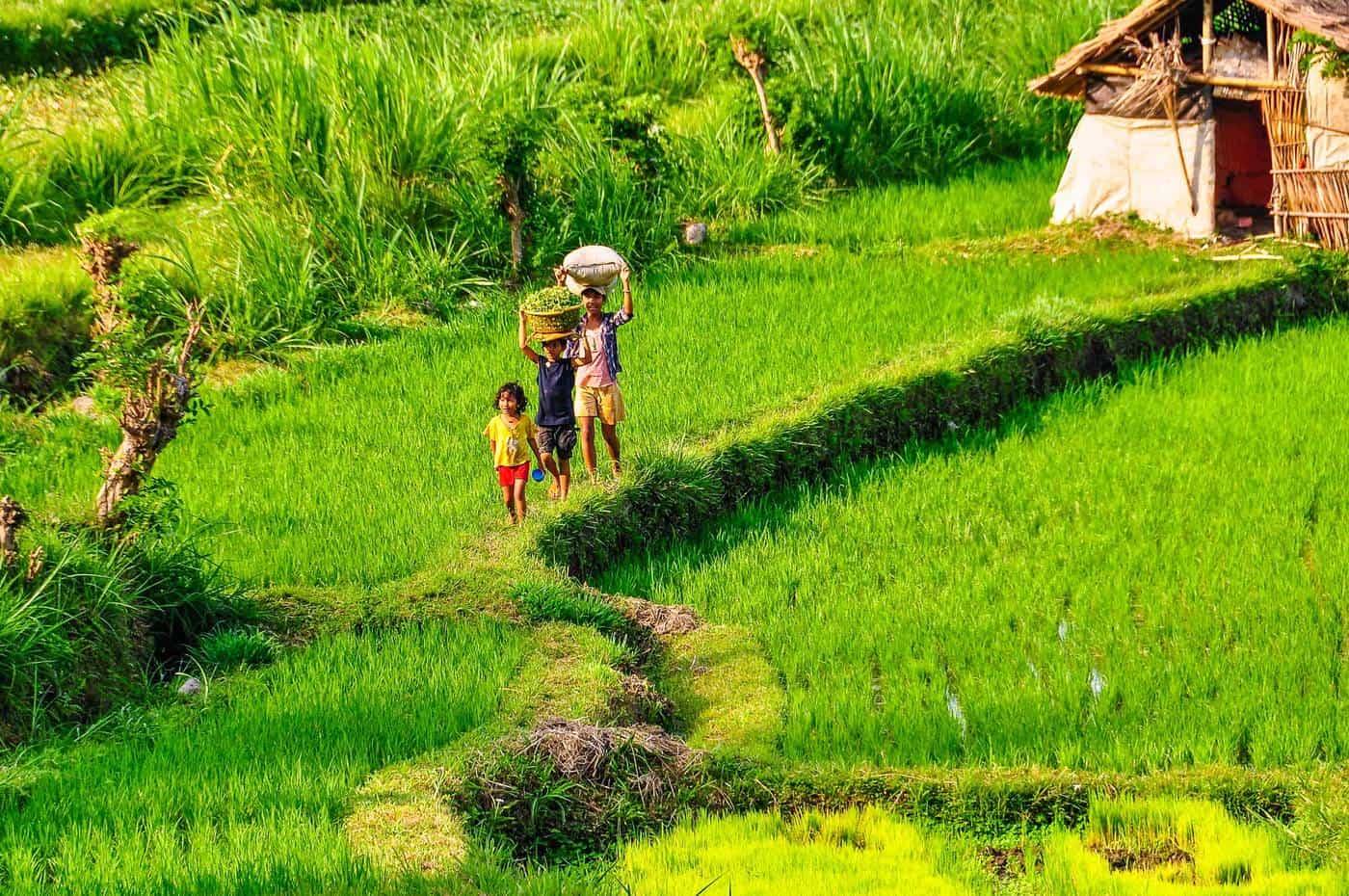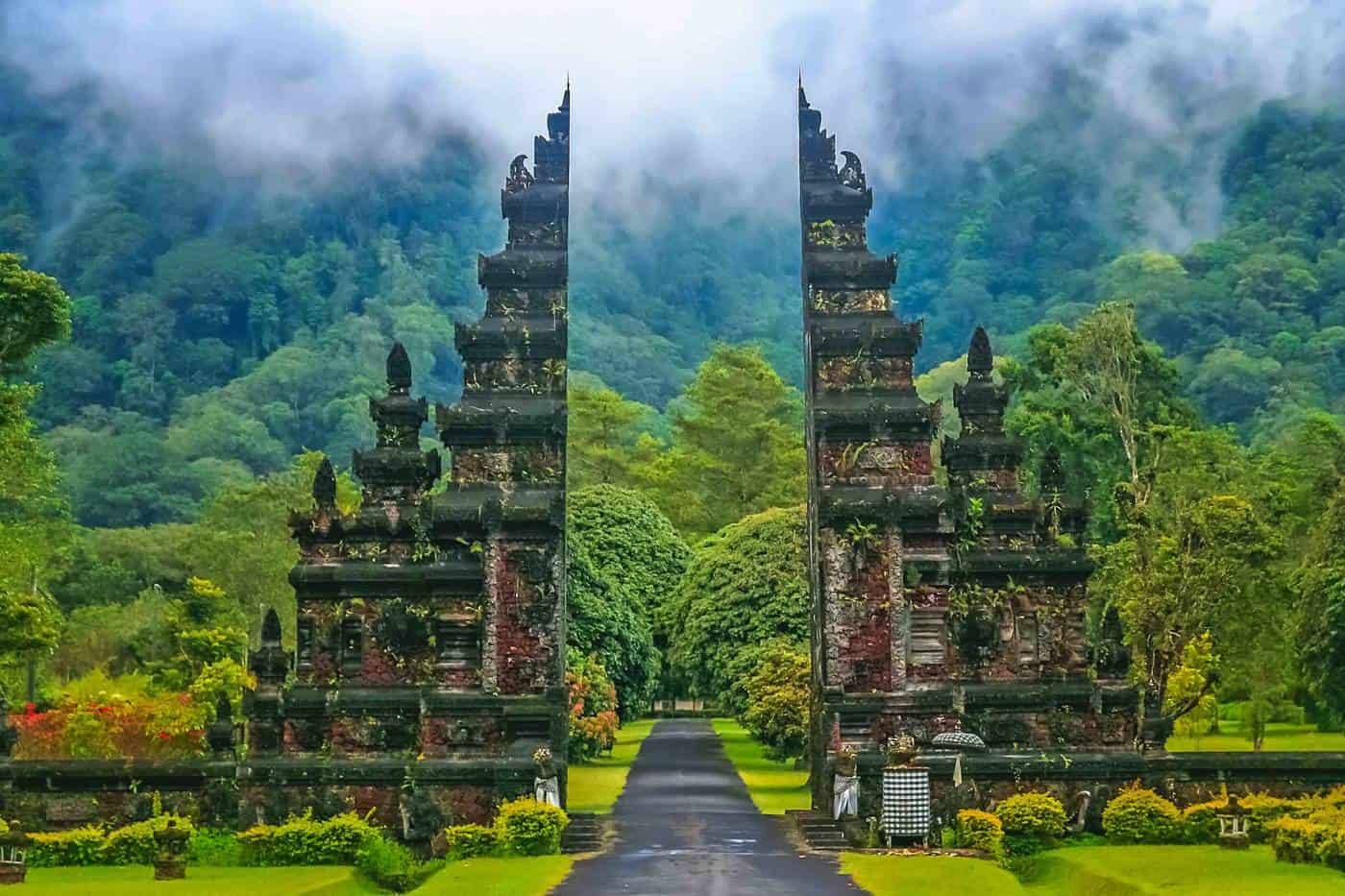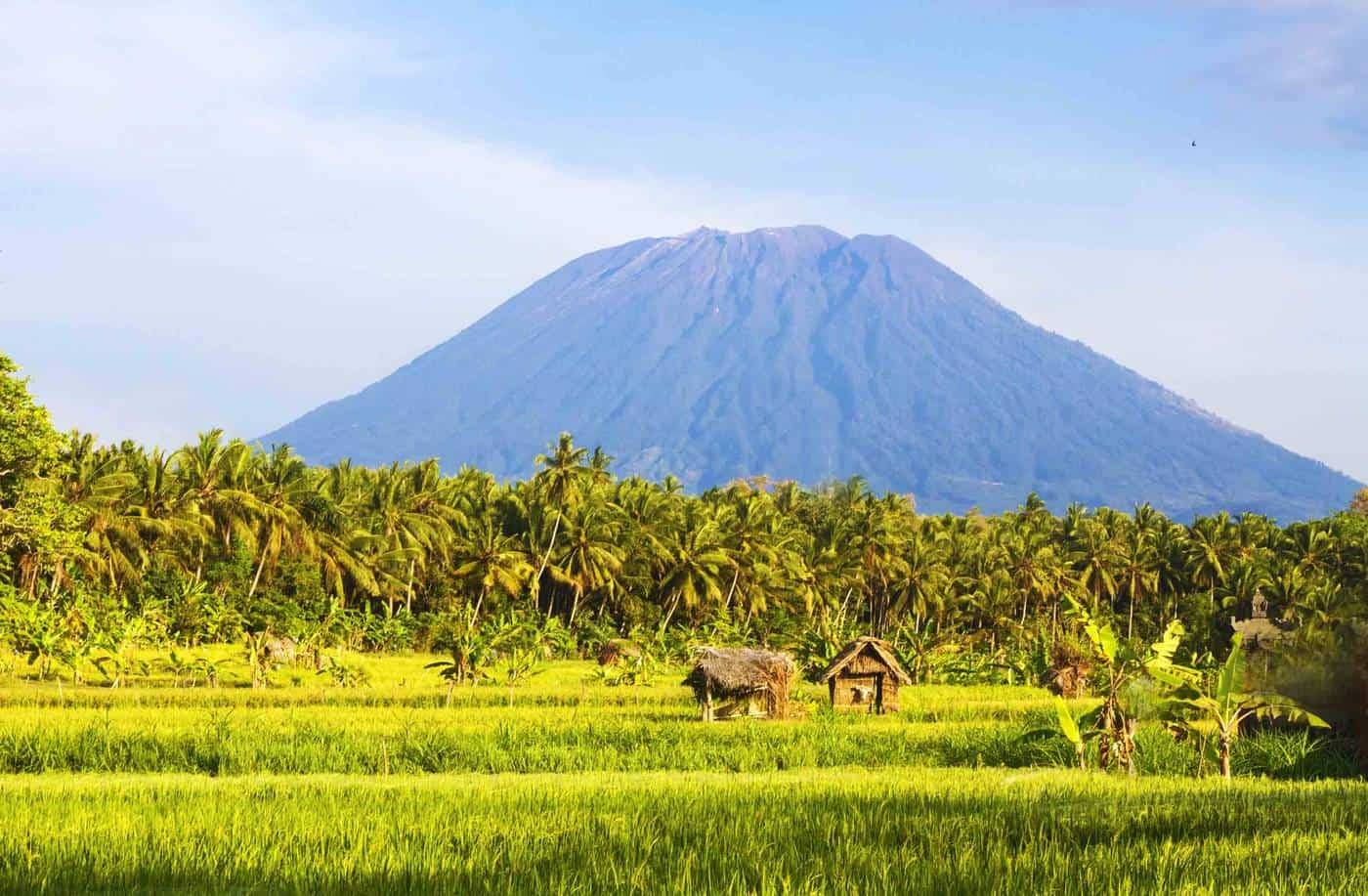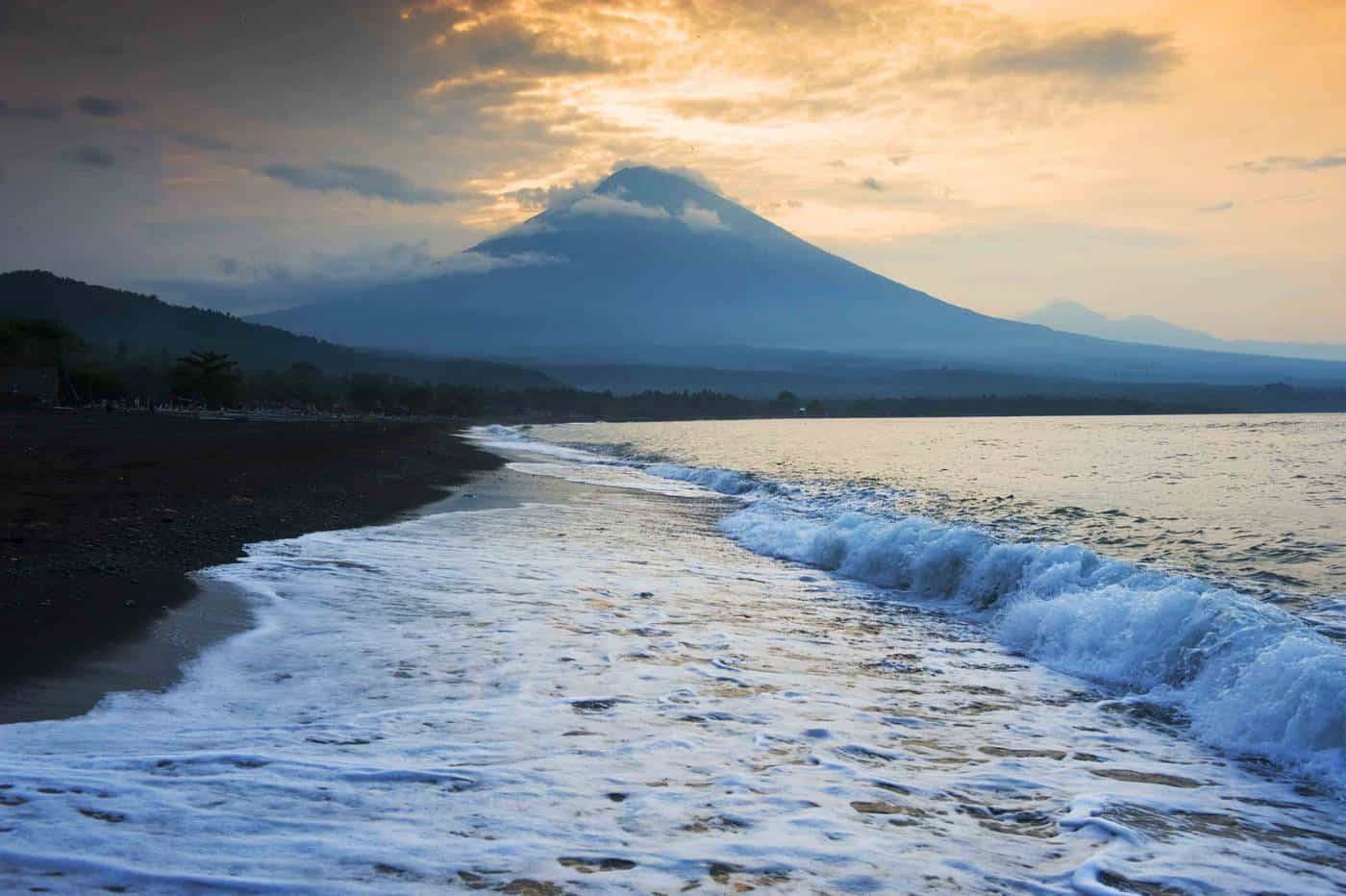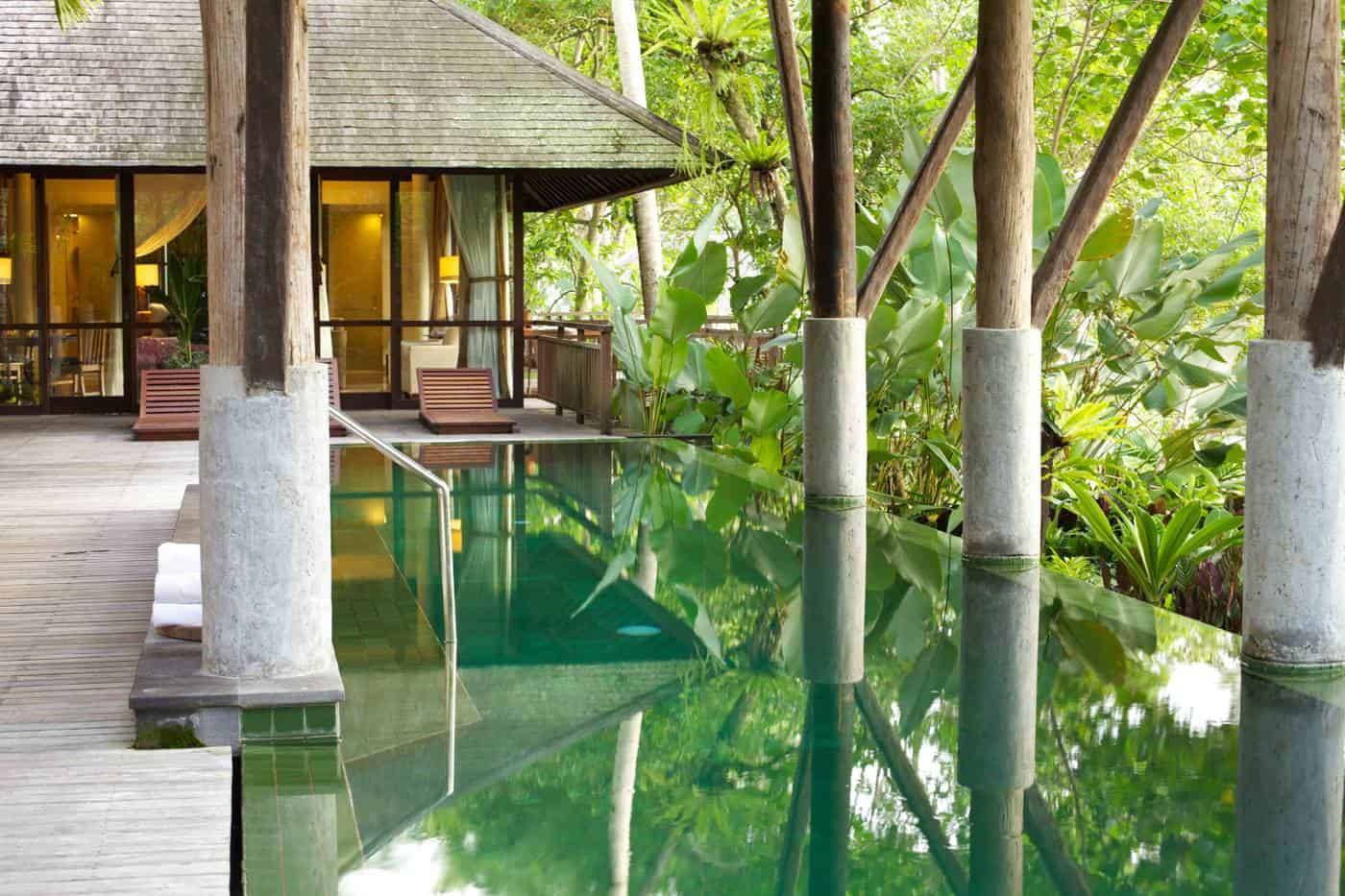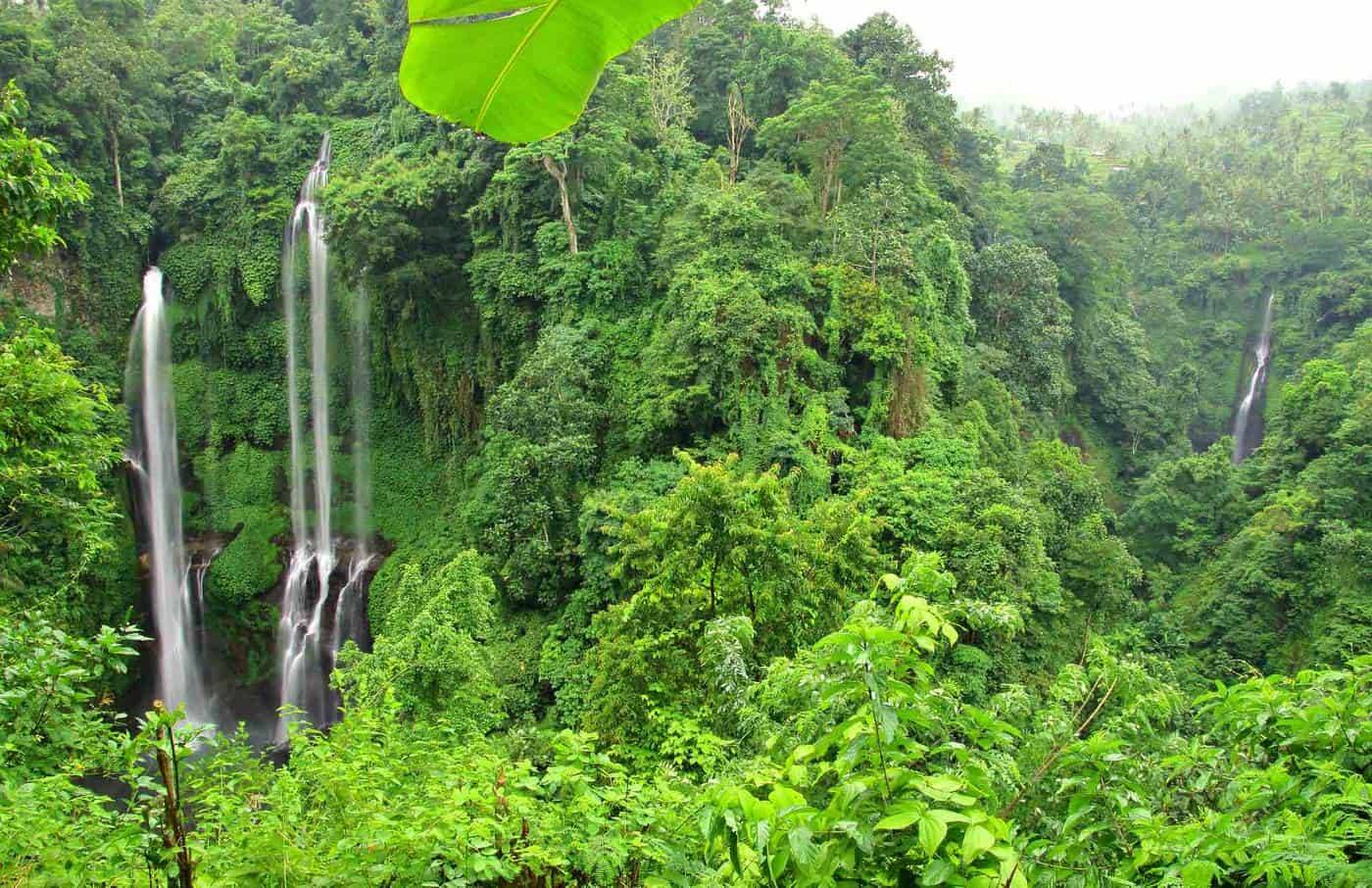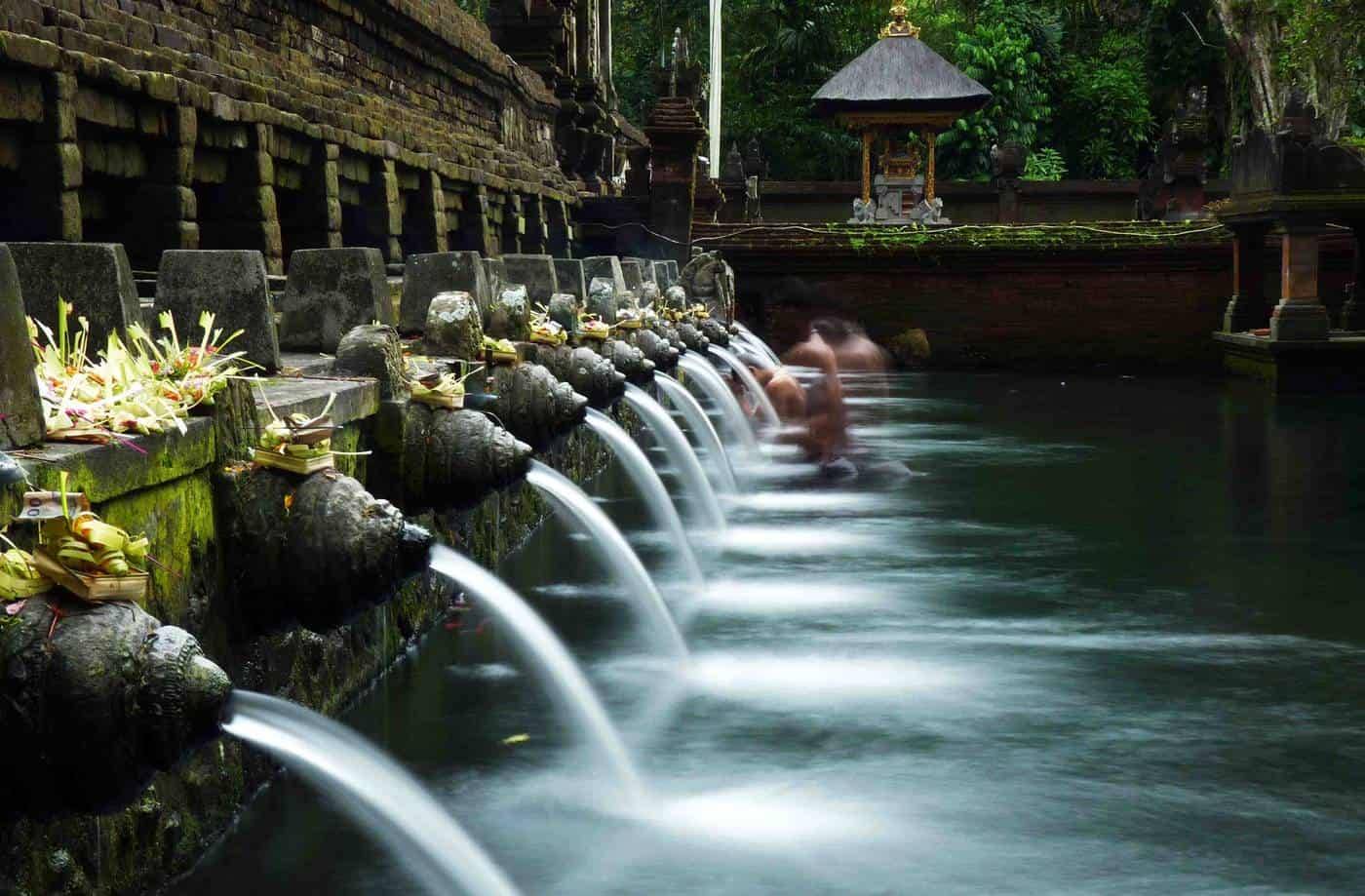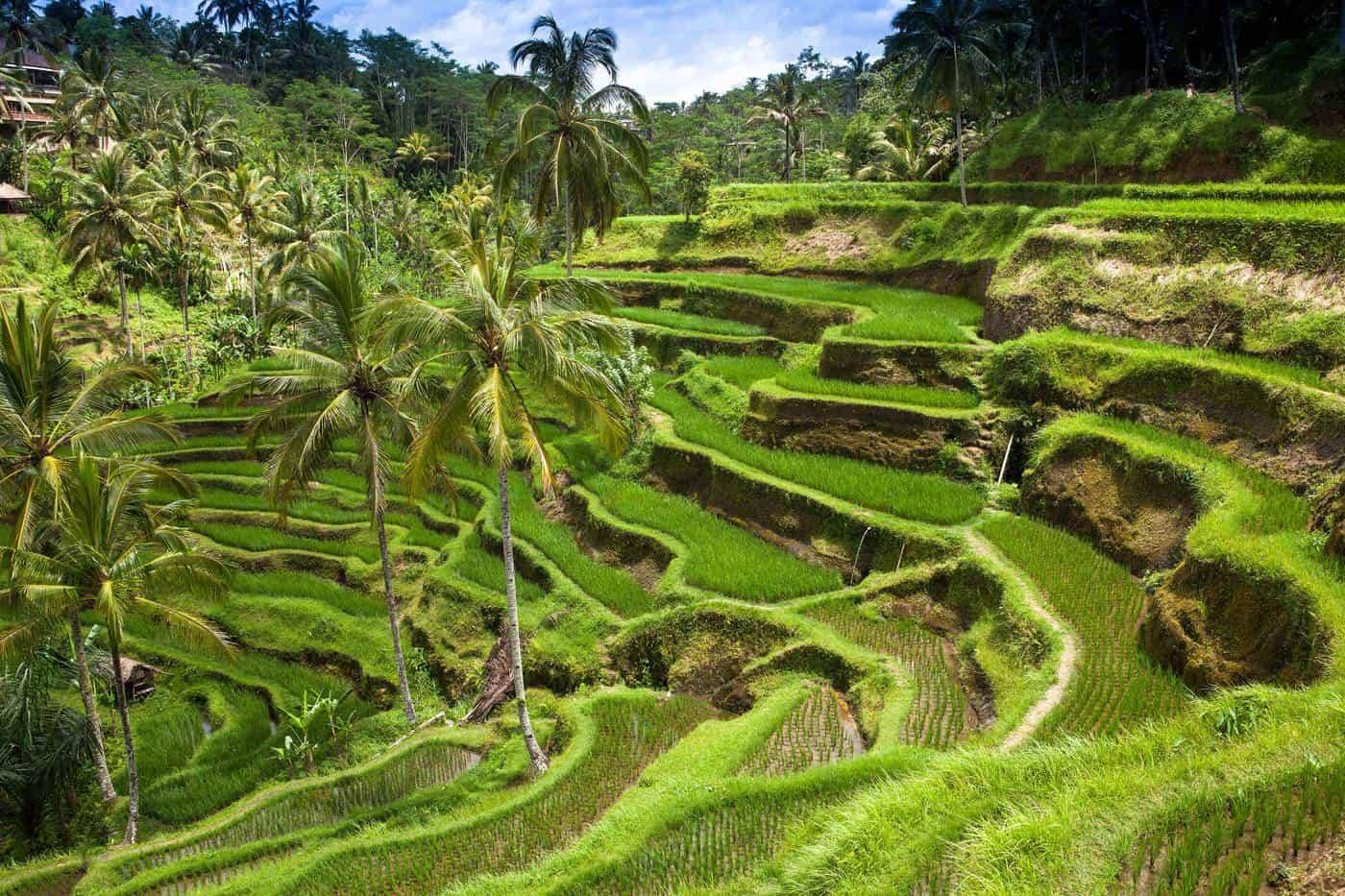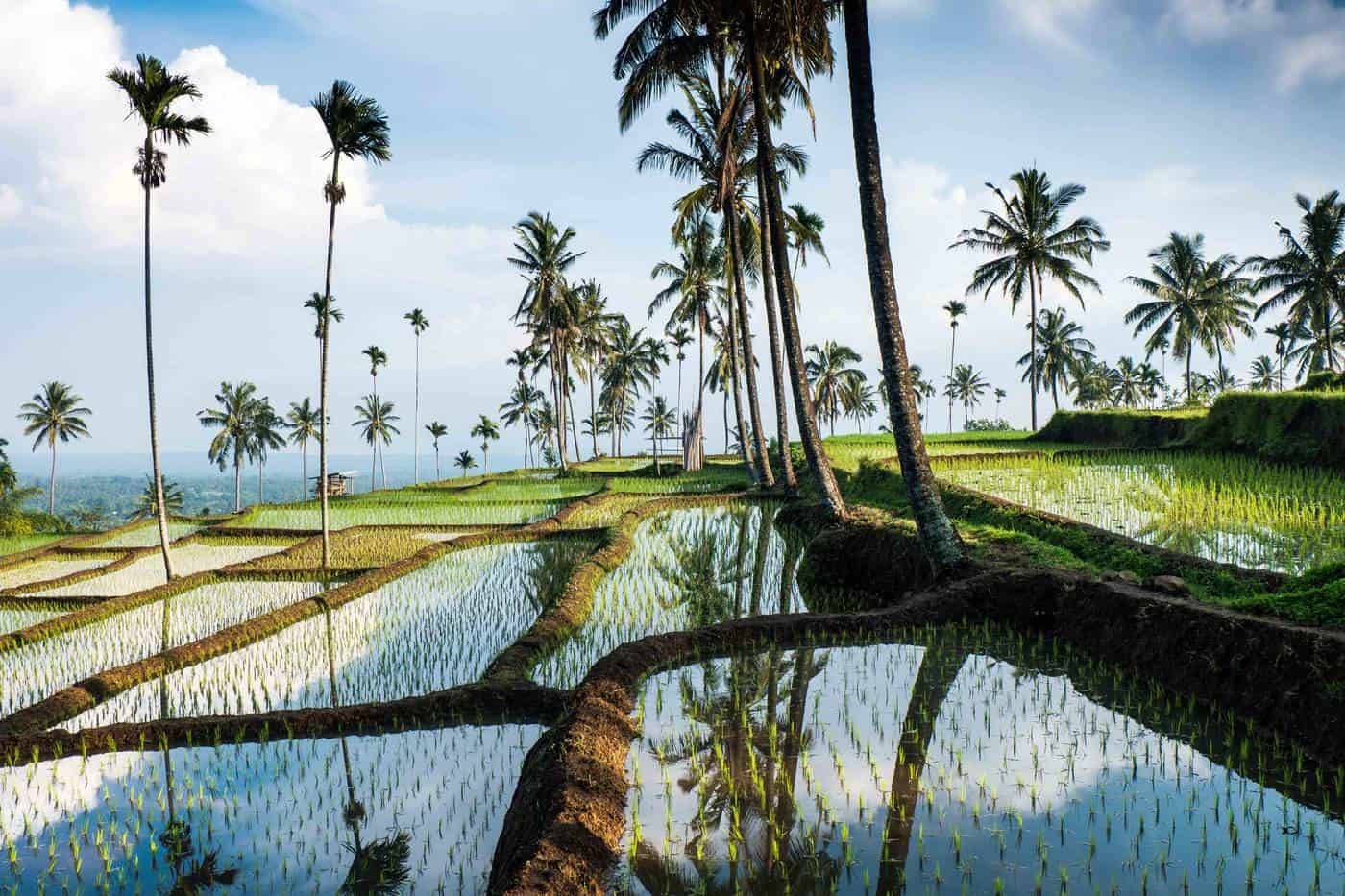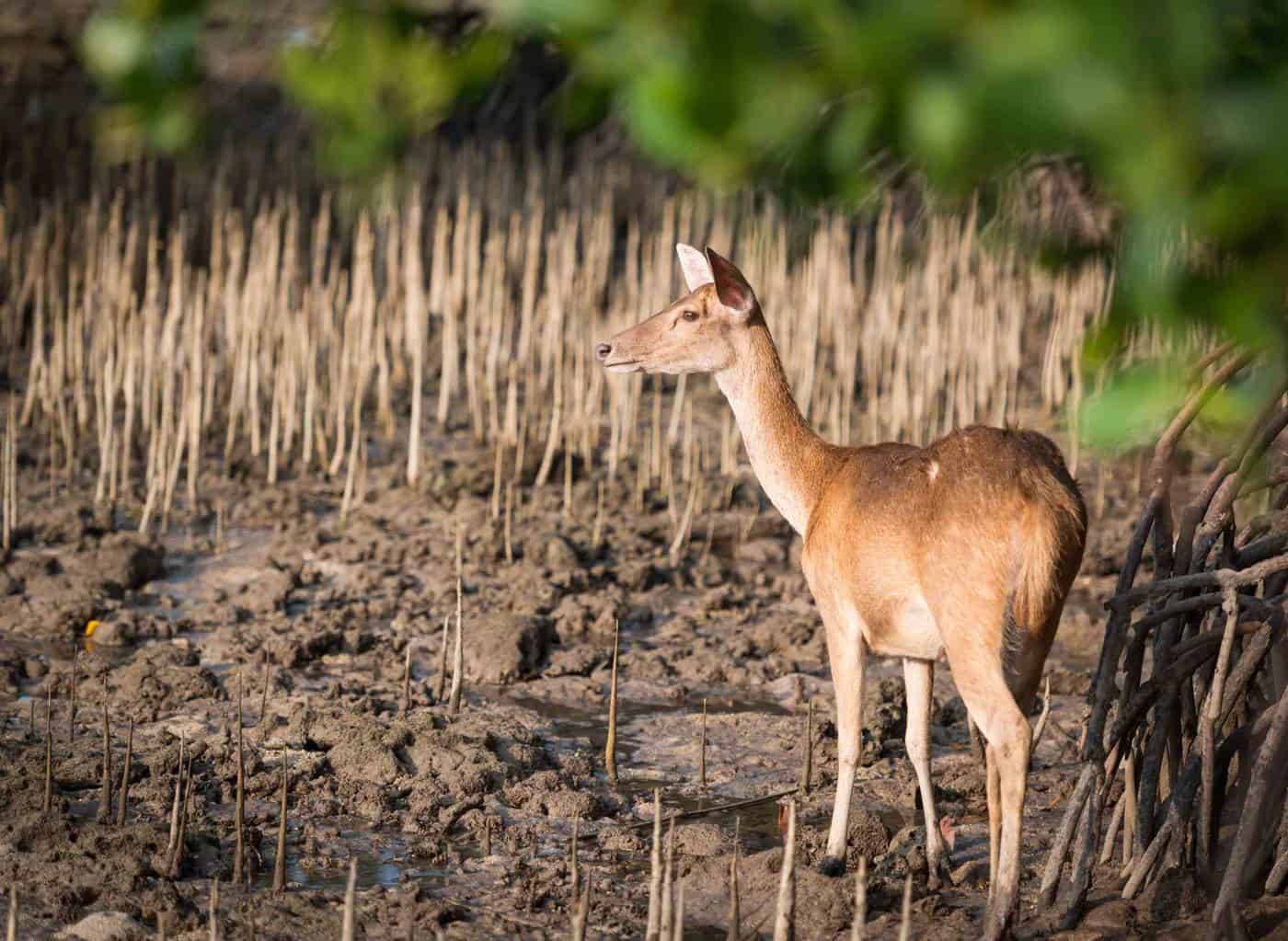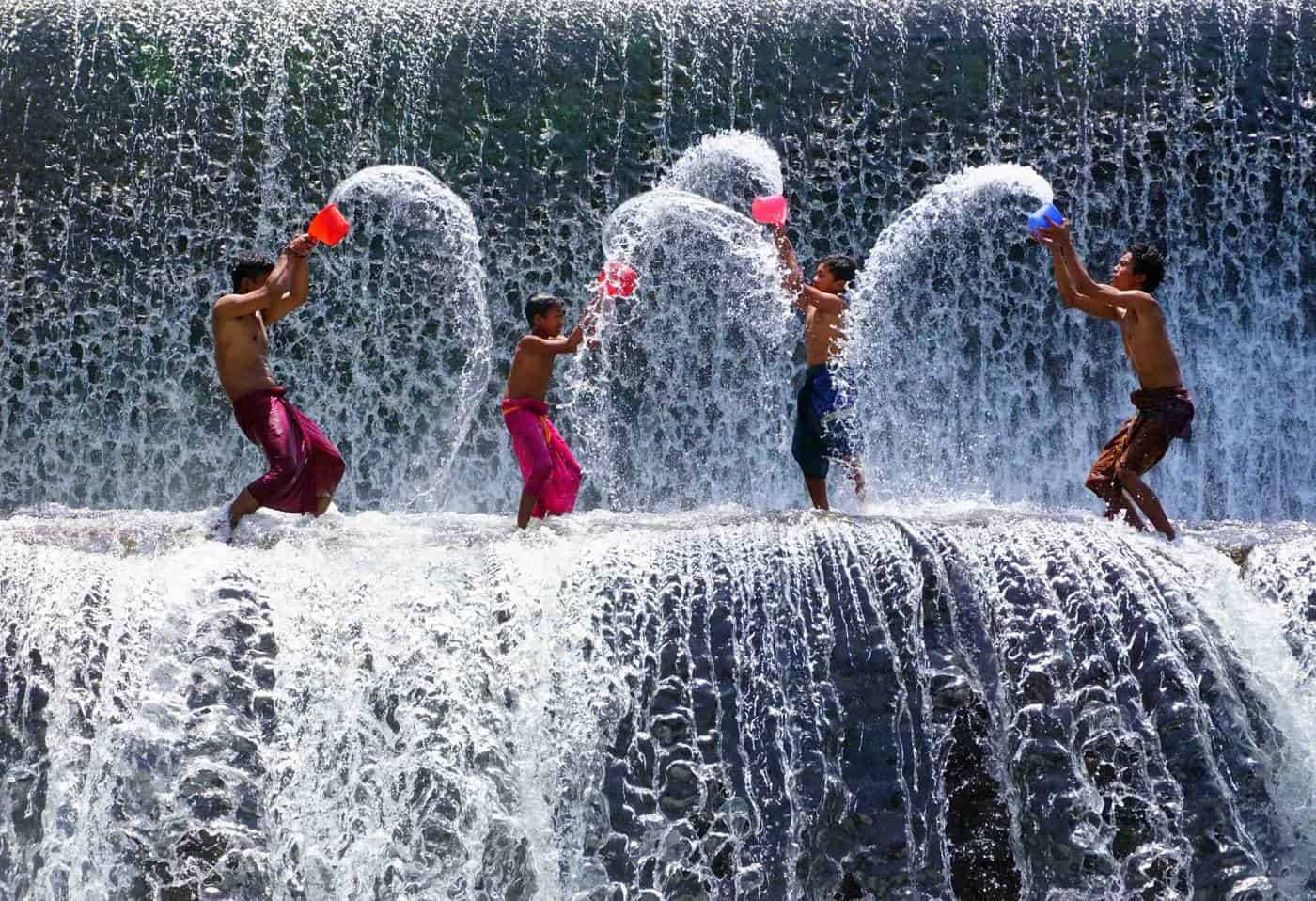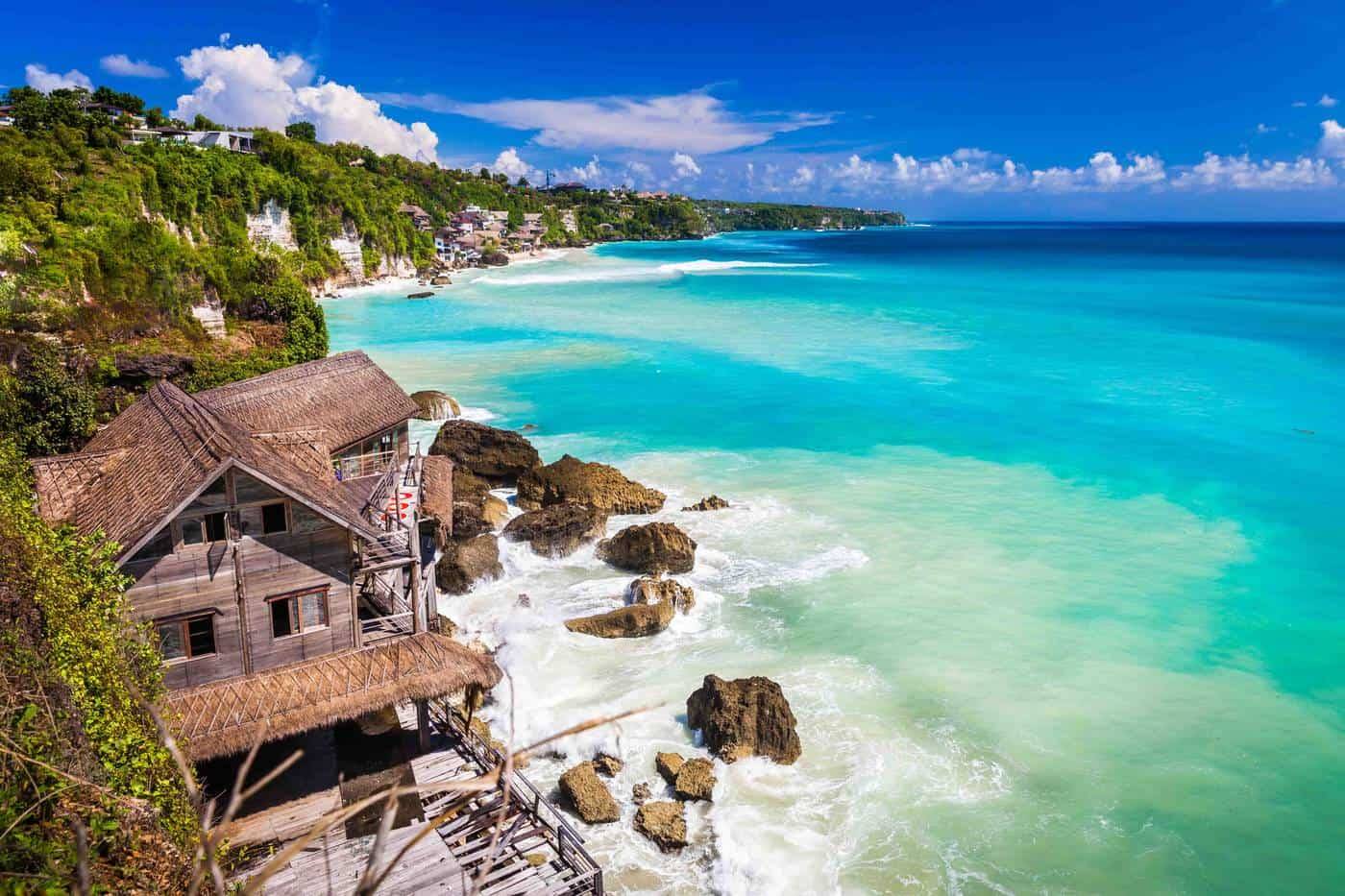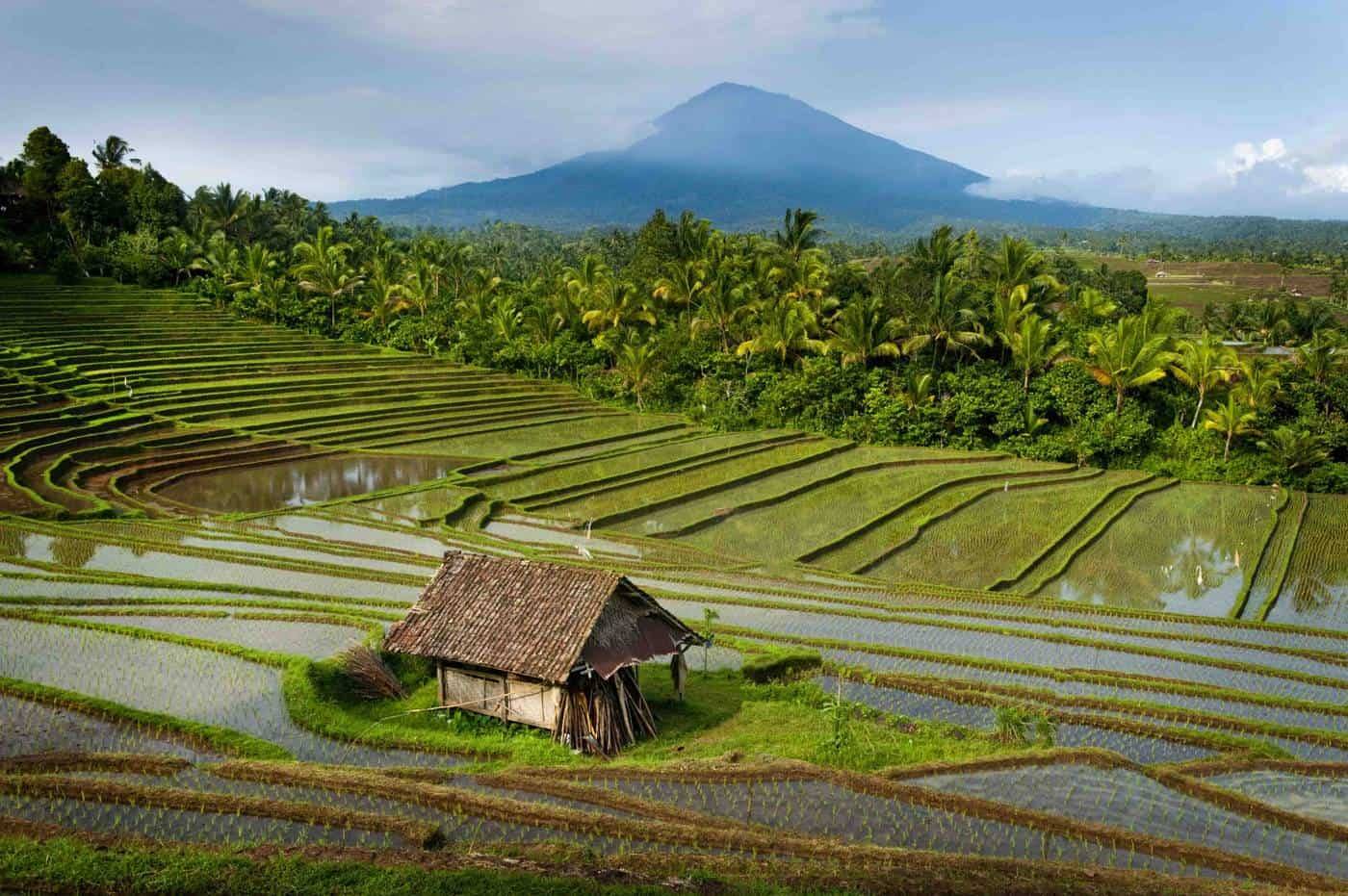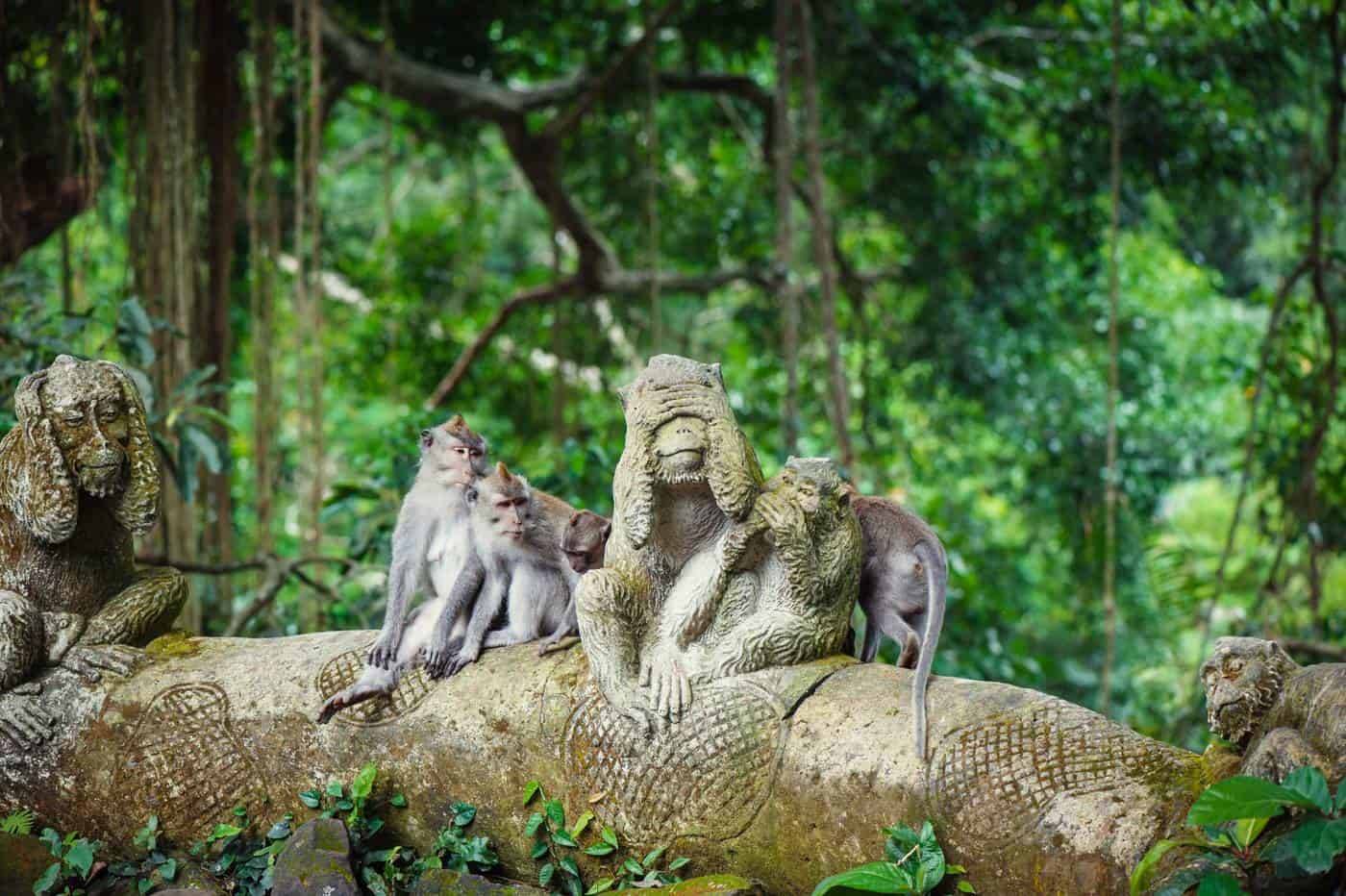
THE BEST NATURE & WILDLIFE TRIPS IN BALI
Astoundingly, the peaceful rainforest lives hand in hand with fierce volcanoes. These, on the other hand, bring thrill and excitement for climbers and adventurous travellers. From rice paddies, chilli, coffee and flower plantations through tumbling waterfalls and exotic wildlife to the smoking volcanoes – Bali presents natural grandeur on a large scale.
KINTAMANI VOLCANO
Kintamani, standing right at the heart of Bali, has gained its fame through dramatic scenery and picturesque landscapes. The major points of interest are Lake Batur and Penelokan village, for they provide spectacular views of this crater-lake and Mount Batur (1.700 m), set in a huge volcanic caldera.
This is an active volcano which can be climbed with the help of a local guide, and it is a moderate 3-4 hour-long return trip. Although Bali is a tropical island, Kintamani has drizzly days and chilly nights, and it is always good to have some warm clothes in the bag.
The most intriguing site in Kintamani is perhaps Aga village in Trunyan on the eastern shore of the Batur Lake. You can get there with a local guide, using a basic rowing boat from Kedisan or Toyo Bungkah.
This is a very isolated part of Bali, ruled by tradition and strict religion. Ancient customs in Bali Aga include the open burial of dead bodies in a pit covered by just some light cloth. Skulls and bones dominate the sacred place what gives the place a pretty spooky character.
BEDUGUL LAKES
This spectacular mountain range in the central Bali is another popular location for nature lovers with cool temperatures. The starting points to all key attractions are three crater lakes – Danau Bratan, Danau Buyan and Danau Tamblingan.
Regarded as the most picturesque temple on the island, Pura Ulun Danu Bratan is a major Shivaite and water temple of Bali. The temple complex, located on the shores of Lake Bratan and surrounded by beautiful mountains, is also the second most important temple on the island.
Built in 1633, this temple is used for offerings ceremony to the Balinese water and Dewi Danu – the goddess of lakes and rivers. There are five temples within the complex, and a Buddha statue also present inside this temple.
Munduk is well-known for scenic rice fields, traditional villages, idyllic waterfalls and lush greenery. The fast-growing eco-tourism is not to be overlooked; there are picturesque coffee, vanilla, cloves and cacao plantations in the highlands that can be visited.
Buleleng features the best waterfalls in Bali and great jungle trekking opportunities; Banyumala Twin Falls, Pucak Manik, Sekumpul, Git Git and Aling-Aling are lovely short trips from Bratan.
Candikuning is home to some of the most impressive botanic gardens in Indonesia – Kebun Raya Bali. The vast gardens cover 160 hectares, and one could easily spend a whole day here.
MOUNT AGUNG
Gunung Agung (3.031 m) is the highest point on the island. Towering over rice fields and temples from one side and facing the Bali Sea from the other, Mt Agung is a perfectly-shaped conical volcano covered with lush forest in the west and barren slopes in the east. The volcano protects the most significant temple in Bali – Pura Besakih.
Dating back to the prehistoric times, the origin of Pura Besakih is woven into legends and myths. Pura Besakih is the largest and holiest Hindu religious complex in Bali. The temple is built on six levels, terraced up the slope and made up of 23 temples, sitting on parallel ridges.
What is remarkable is that a series of eruptions of Mount Agung in 1963 caused lava flows that killed approximately almost 2000 people, yet missed the temple complex by mere meters. Balinese people believe that the miracle happened for the gods who wished to demonstrate their power but not destroy the greatest religious monument of Bali.
CLIMBING MOUNT AGUNG
There are two main routes up the mountain; one starts at Pura Besakih and the other at Pura Pasar Agung. The hike is reasonably tougher than Mount Batur, and it requires a good level of fitness. The whole trip takes up at least 5 hours one way, and it is recommended to head off before dawn to avoid crowds and heat. Remember that it is only accessible in the dry season (May-Oct).
UBUD (RAINFOREST)
While most of the visitors of Bali would head straight to its sophisticated beach locations, many others are finding peace and serenity in the lush interior. Ubud is the favourite.
The town teems with peaceful yoga and meditation retreats, massage and spa centres, and the whole ambience is a medicine for the soul. One can choose from a wide variety of stylish resorts, eco-lodges and private pool villas, tree houses, secluded estates – all built in Balinese design amid the rice fields or in the rainforest.
Nature lovers will find their heaven in Ubud`s jungles that cover the majority of the area. Splendid rice paddies, chilli, coffee and flower plantations only amplify the spectacle.
Wild rivers, rapids and waterfalls create perfect conditions for some adventure and thrill, such as white-water rafting, river kayaking, canoeing. For instance, the Tegenungan Waterfall is probably the most photographed and visited.
Monkey Forest is the major attraction of Ubud, and it has its charm. It offers a nice walk through a verdant park area covered with cheeky apes.
These cute little creatures might seem friendly, but one is never careful enough; avoid feeding them or showing them eye-catching objects and watch your sunglasses, handbags, phones and jewellery – they are also very clever thieves!
LOVINA HIGHLANDS (HOTSPRINGS & WATERFALLS)
The northern coastline of Bali is popular with those who like tranquillity and quiet beaches, and dolphins. However, Lovina presents not only excellent coastal holidays but also splendid hinterland attractions.
After an exciting Dolphin Tour, the visitors are recommended to see one of the nearby waterfalls, e.g. the Sing Sing, Blahmantung, Git Git and Sekumpul.
Stop by at the sacred hot springs ‘Air Panas’ of Banjar that is set in the midst of the jungle in a beautifully landscaped tropical garden, close to the Lovina Beach.
There are three public pools and a private pool, and they have been serving the local people for centuries to help to heal illness. The sulphuric water is of volcanic origin and has an agreeable warm temperature of 37 degrees Celcius, ideal for people suffering from rheumatic diseases.
RICE FIELDS & PLANTATIONS
Rice farming in Bali dates back to Neolithic times, and it is known for some of the most sophisticated irrigation and terraced rice system.
Tegalalang Rice Terrace is a celebrated tourist attraction for marvellous rice terraces in a picturesque setting. There are several restaurants overlooking the rice fields that are still today traditionally worked by local men and water buffaloes.
The UNESCO listed Jatiluwih paddy fields promote some of the most striking images so typical of Bali. The scenery here is just surreal. There are cafes and taverns with panoramic views where you can enjoy the whole ambience.
Munduk is also well-known for scenic rice fields, traditional villages, idyllic waterfalls and lush greenery. The fast-growing eco-tourism is not to be overlooked; there are plenty of coffee, vanilla, cloves and cacao plantations in the highlands that can be visited.
WEST BALI NATIONAL PARK (SEALIFE & WILDLIFE)
West Bali National Park (Bali Barat) is the most north-westerly point of Bali, its only national park and the least visited part on the island. The coastal area includes Prapat Agung Peninsula, Gilimanuk, Cekik and Banyuwedang. The reserve is defined by rainforest, montane forest, mangroves, savanna, acacia scrub and lowland forest.
While Menjangan is a popular diving destination Mount Patas (1,412 m) and Mount Merbuk (1,388 m) are great hiking challenges for every adventurer.
Tegal Bunder Trail is an idea for birdlife spotting, and it is an easy two-hour walk. Gunung Klatakan Trail is an 8-hour trip through untouched rainforest, Teluk Brumbun is known for savannah landscape and native wildlife, e.g. Sambar deer, wild pig, primates, reptiles and exotic birds.
The uninhabited Menjangan Island presents wonderful marine life, snorkelling or diving whereas the Gilimanuk Bay takes the visitors through pristine mangroves fringing the bay, and these act as a natural nursery for the diverse fish life in the area.
DID YOU KNOW?
West Bali National Park is the last remaining wilderness area in Bali with abundant fauna and flora. One Bali Tiger was shot here in 1937; despite locals claiming the species` existence in the national park, 1937 was the last ever confirmed sighting of this species, and today it is considered to be extinct.
WHEN TO TRAVEL
The best time to visit Bali is between May-October, in the dry season. Especially, fans of beach, diving and snorkelling will enjoy the clear, calm waters and bright skies in these months.
The peak season is June-September, the prices go up and hotels often fully booked.
HOW TO GET THERE
Fly to Denpasar.
Use the reliable Bluebird Taxi services at the airport to bring you to your hotel (unless pre-arranged).
For all international flights visit www.sckyscanner.com or www.momondo.com

